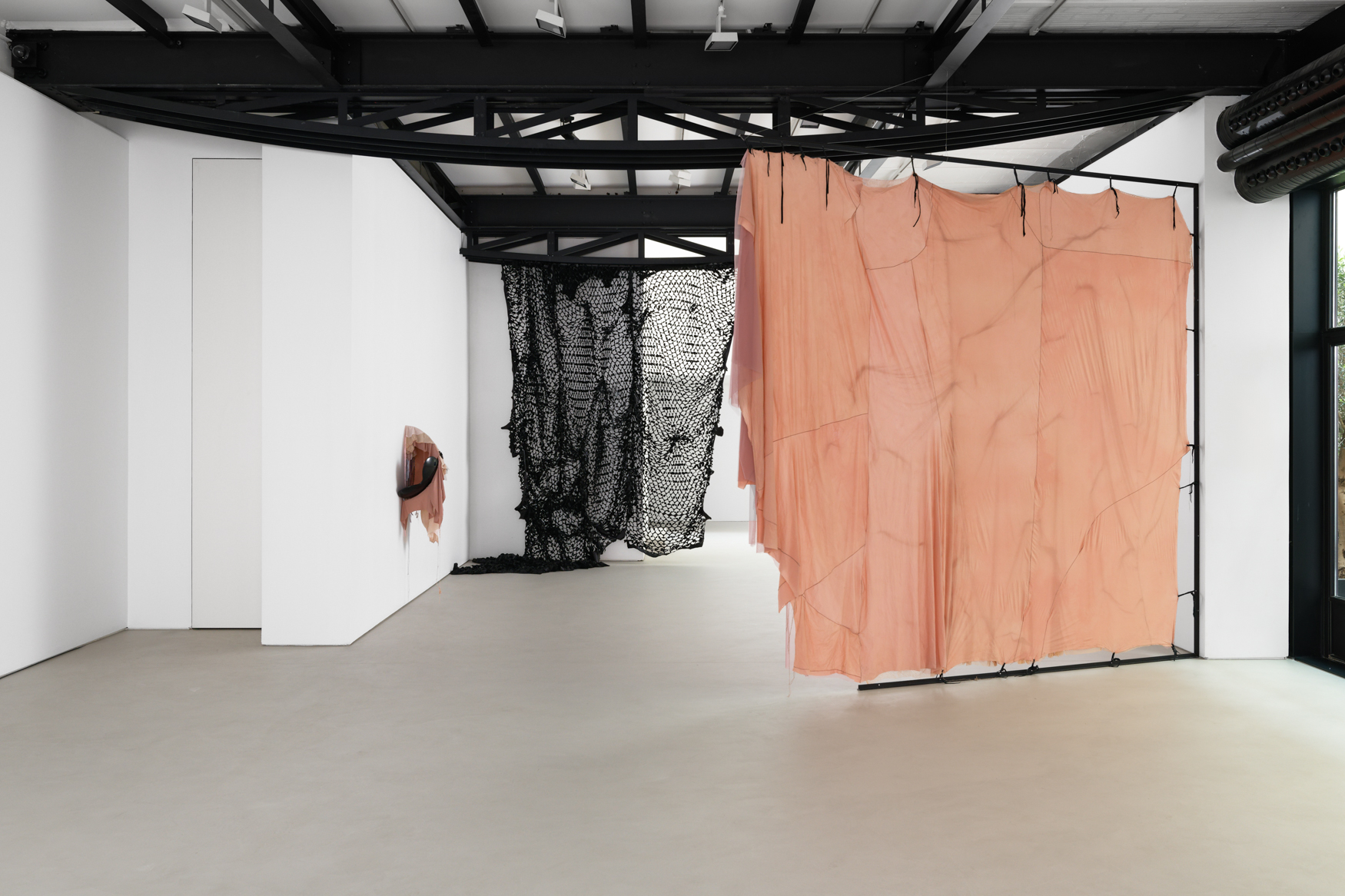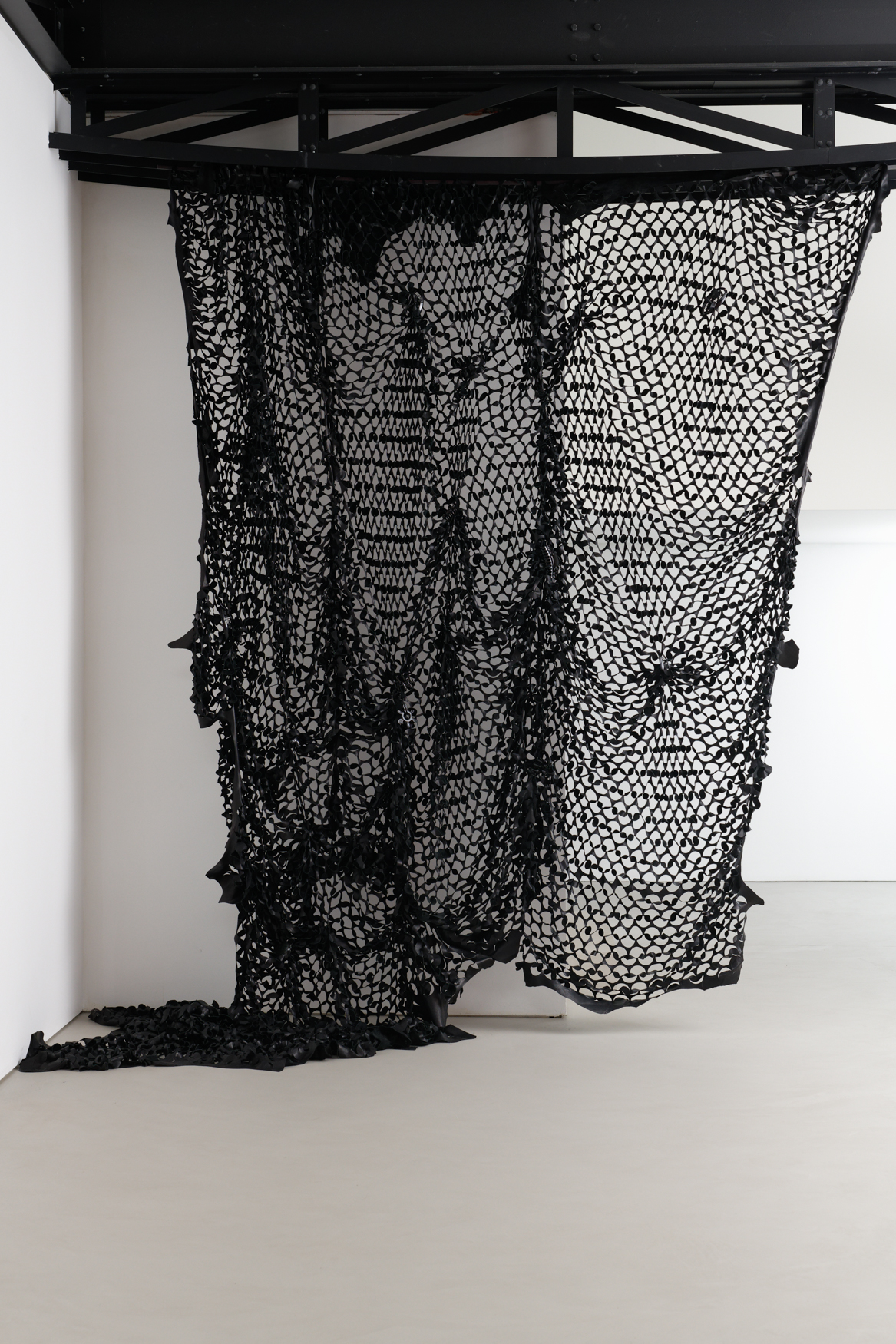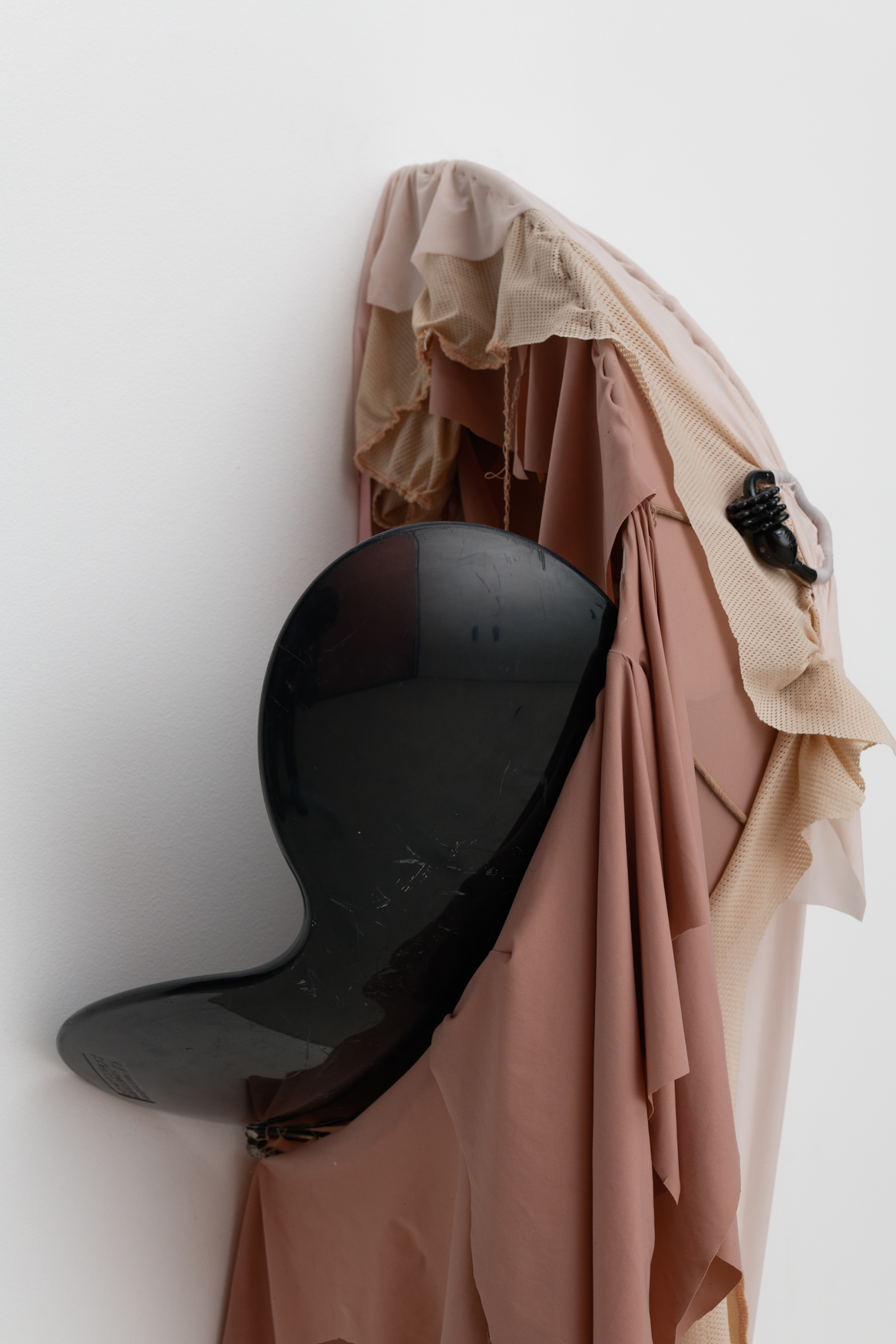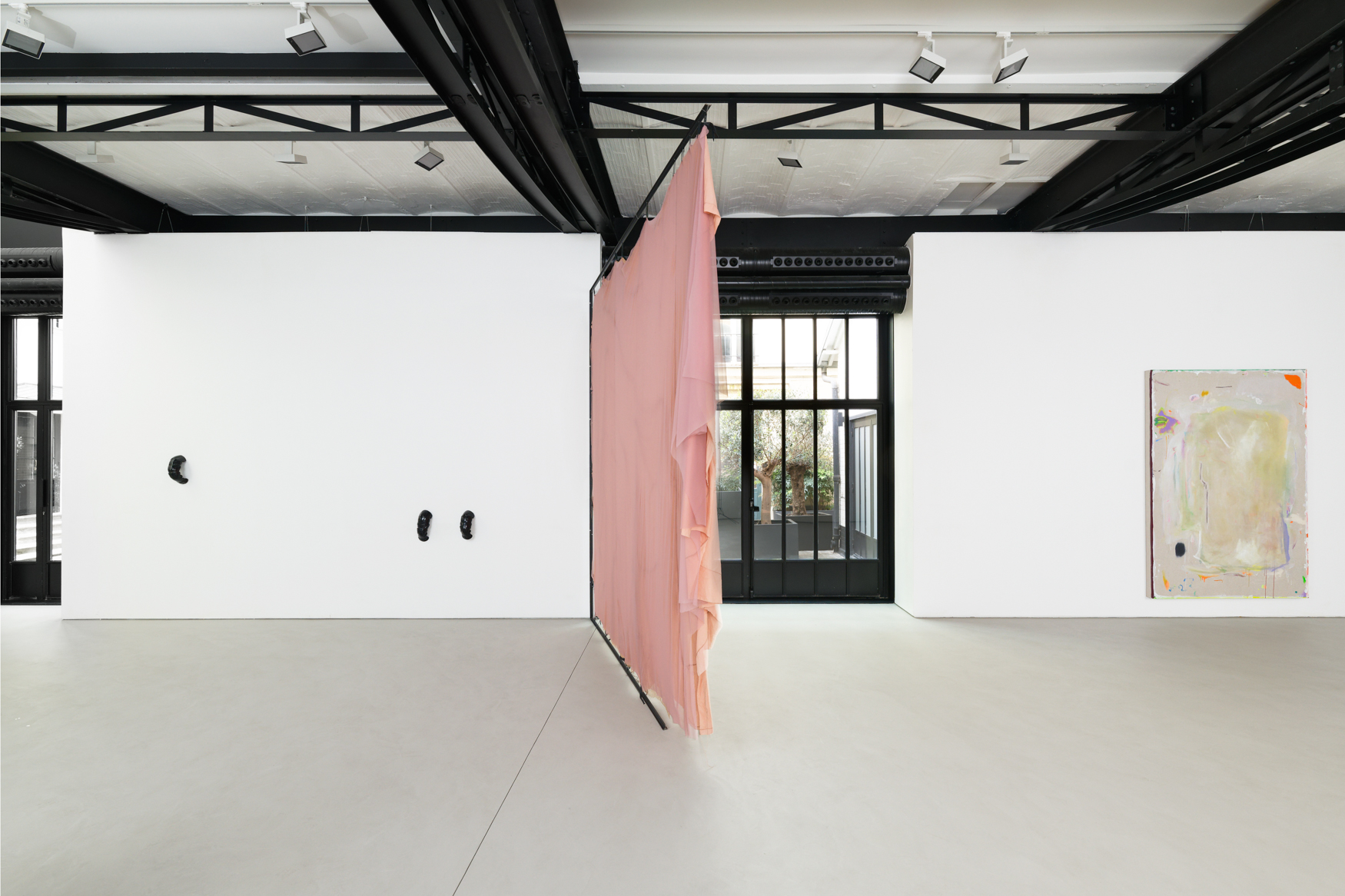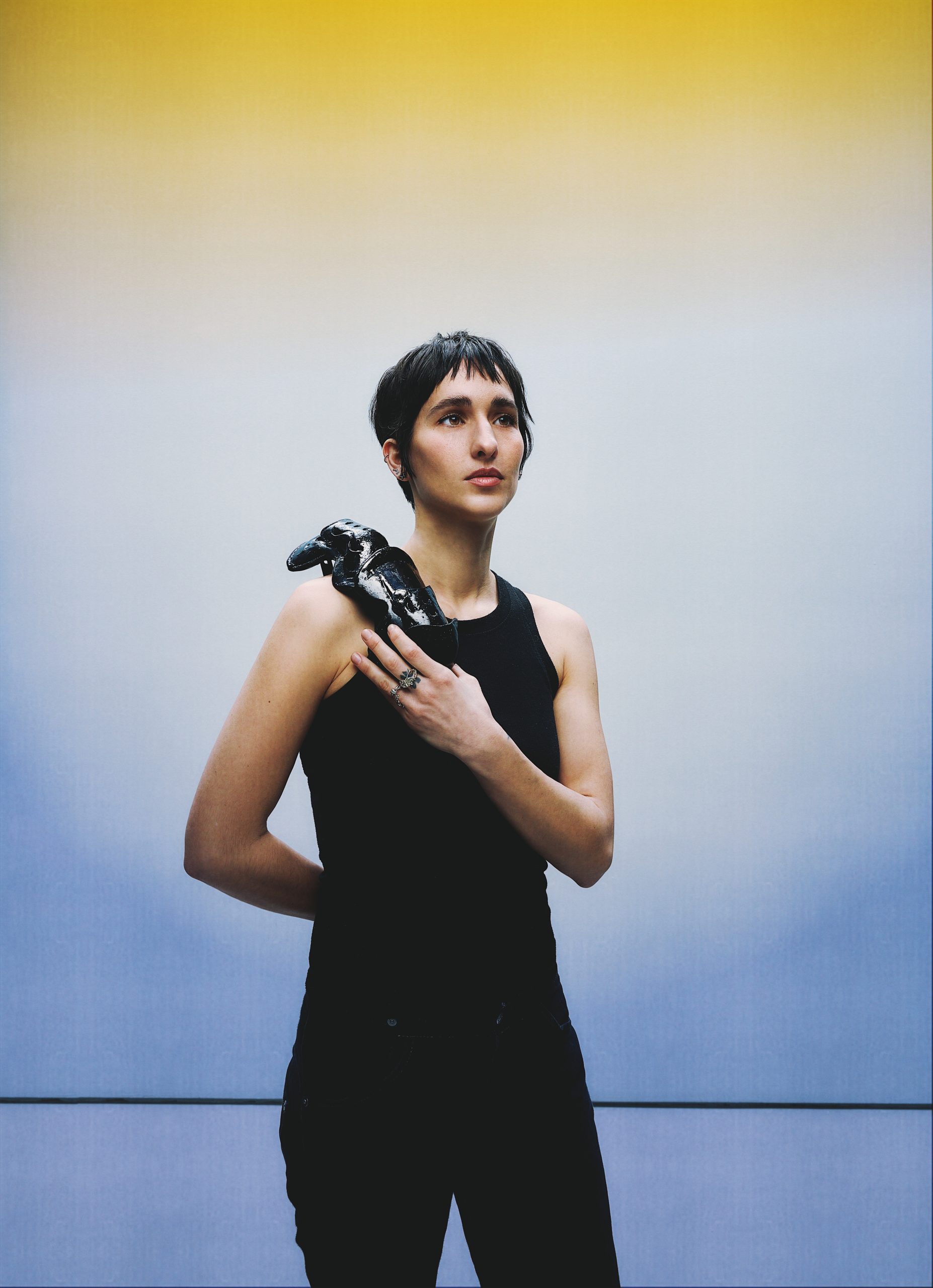
Garance Früh
A graduate of the Ecole nationale supérieure d’art de Paris-Cergy, she lives and works in Paris. A sculptor particularly interested in the body, Garance Früh feeds her work with sports and medical objects such as prostheses, helmets and waders. Nominated for the third edition of the Reiffers Art Initiatives Prize, her work is exhibited at the Acacias Art Center from April 26 to June 8, 2024.
Biography
Garance Früh deconstructs her works and reassembles them before molding them in ceramic. She often combines them with textiles in flesh-toned colors evoking the skin as much as the materials of sportswear.
Her composite bodies speak to us of the notions of ergonomics and protection, of the care they bring to the most vulnerable parts of the body.
Garance Früh questions gender bias, and more specifically the way we perceive female and infantile bodies, supposedly vulnerable and relegated to the realm of delicacy. She calls for their empowerment.
Texts
"67e Salon de Montrouge : qui sont les jeunes artistes à suivre absolument ?"
— Numéro, 2023
Garance Früh's sculpture is an art of disguise: that of the organic world. Skin, materialized by large pink or ecru canvases that she stretches over her structures, but also flesh and bones, whose shapes and reliefs the artist imitates by cutting out, altering, deconstructing and assembling the accessories that make them protect or support them.
Hanging on the white walls of the Belfry, the disconcerting works of the French artist are in fact similar to human growths or molts that mutants would have left behind after their passage. Here we recognize a black hockey helmet, there a piece of beige leather glove, while pieces of padded fabric recall a bulletproof vest or a ribbed structure evokes the baskets of period dresses. Thus fragmented, decontextualized and remodeled to the point of generating abstract volumes, these elements thus create unfinished bodies which bear on them the imprint of those who had once worn them. And unfold in space a disembodied cabinet of curiosities, where humans are ultimately conspicuous by their absence.
Hanging on the white walls of the Belfry, the disconcerting works of the French artist are in fact similar to human growths or molts that mutants would have left behind after their passage. Here we recognize a black hockey helmet, there a piece of beige leather glove, while pieces of padded fabric recall a bulletproof vest or a ribbed structure evokes the baskets of period dresses. Thus fragmented, decontextualized and remodeled to the point of generating abstract volumes, these elements thus create unfinished bodies which bear on them the imprint of those who had once worn them. And unfold in space a disembodied cabinet of curiosities, where humans are ultimately conspicuous by their absence.
